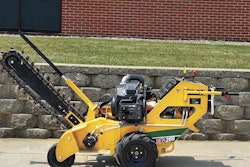 When perennials develop a bald spot in the center or stems begin to flop over, dividing them is a good way to regain vigor.
When perennials develop a bald spot in the center or stems begin to flop over, dividing them is a good way to regain vigor.We are well into the summer now and while you might think most of your plant work is done, the time to divide perennials is just around the corner.
The best time to divide spring and early summer bloomers is during late summer and early fall so they can devote their energy to developing roots and leaves. Late summer and autumn bloomers should be divided in the spring.
There are three main benefits that come from dividing perennials:
- To control the size of the plant – Some perennials can grow aggressively and begin to overpower other plants in the flower bed.
- To increase the number of plants – If a perennial has become a favorite, dividing is a cheap way to propagate a popular plant.
- To rejuvenate the plant – If the plant becomes overcrowded, it can become susceptible to disease. Dividing allows the plant to have space to grow once more.
Techniques to use
When planning to divide the plants, it is important to make sure the soil is moist beforehand. Water the area thoroughly a day or two before if the soil is dry. It is always best to divide plants on cloudy, overcast days. Hot, sunny days will dry the plants out.
Prune back the stems and foliage to 6 to 8 inches from the ground to ease the division. Dig 4 to 6 inches away from the parent plant and dig down deep to unearth the whole clump. Shake off loose soil and stems to get a better view of the root ball.
The best ways to divide perennials will vary slightly depending on the type of root system.
Plants with spreading root systems that have no distinct pattern usually can be pulled apart by hand. Larger plants with thickly intertwined roots can be separated with either a hand saw or digging forks. Place the two forks in the center of the plant and then pull the pieces apart.
Clumping root systems that originate from a central clump, like those found in daylilies, can be divided with a sharp knife or a garden spade. A developing bud should be kept with each division.
Dividing rhizomes should occur every one to three years as the older ones die off. Bearded irises are one of the most common perennials with rhizomes and should be divided a month after flowering. Rhizome sections that are dead or damaged should be cut off and discarded. Iris divisions should have one fan of leaves and a few inches of rhizome.
Division should result in two to four divisions per plant, with the old and weak portions discarded.
After placing the perennials in their new home, water them well and keep them shaded if hot weather is predicted. Moisture and cool temperatures help the plants recover from the trauma of being divided and moved.
Perennials to leave be
While there are plenty of perennials that benefit from being split up in either the spring or fall, there are others that do not take kindly to being divided.
Monkshood, false indigo, columbine, anemone, bugbane, gas plant, butterfly weed, baby’s breath, hostas and peonies are all perennials that prefer to be left alone. Most of these plants send down a deep tap root that keeps them anchored in, making them more trouble than their worth to move.
Peonies and hostas don’t need to be divided but can adjust to their new surroundings if the need should arise to make more of them. Peonies will need time to adjust and may not bloom the following year after being transplanted.









